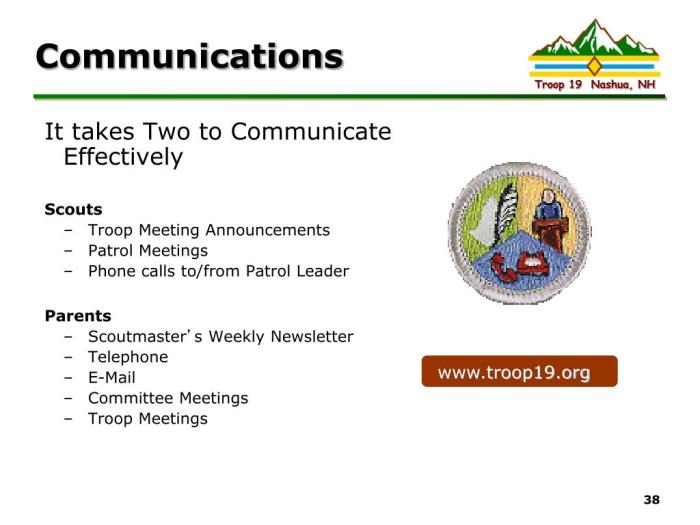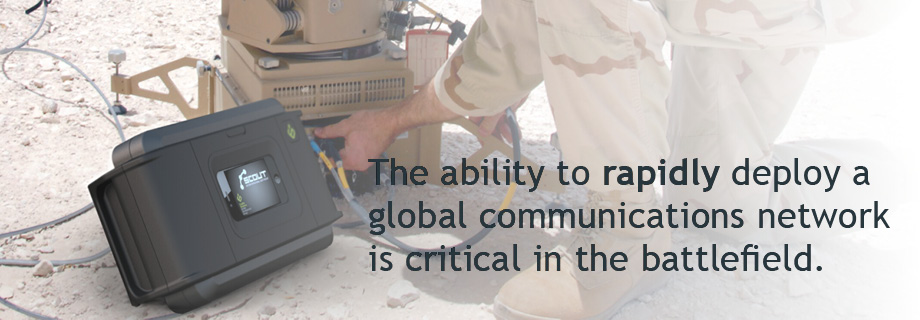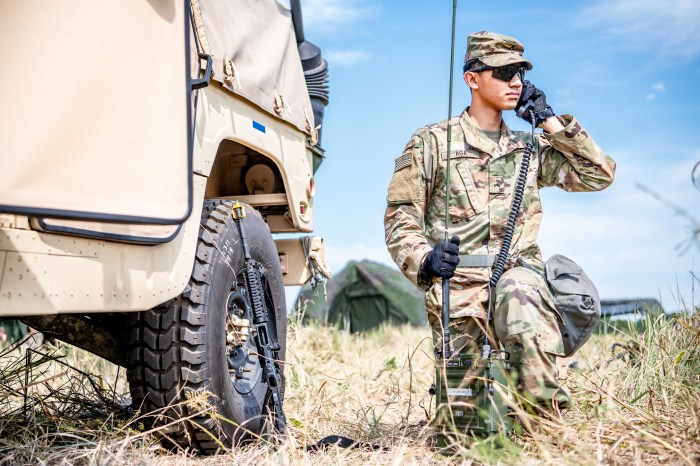Scout troop communication systems play a crucial role in ensuring the safety and effectiveness of scouting expeditions. From traditional methods to cutting-edge technologies, communication is paramount for coordinating activities, navigating challenging terrain, and responding to emergencies.
The evolution of communication in scout troops has been shaped by technological advancements, with each innovation bringing new possibilities and challenges. This article explores the diverse range of communication methods, protocols, training, and equipment available to scout troops, providing insights into best practices and future trends.
Communication Methods

Effective communication is paramount for successful scout troop operations. Traditionally, scouts have relied on a range of methods to convey messages, each with its advantages and disadvantages.
Walkie-talkies, handheld transceivers, provide instant voice communication over short distances. They are portable and easy to use, making them ideal for quick and direct messages. However, their range is limited, and they can be susceptible to interference in certain environments.
Hand Signals
Hand signals offer a non-verbal means of communication, particularly useful in situations where silence is crucial or when distances are too great for voice transmission. They are universally recognized among scouts and can convey simple messages effectively. However, hand signals are limited in their complexity and can be difficult to interpret in poor visibility.
Smoke Signals
Smoke signals, created by burning specific materials, have been used by scouts for centuries to transmit messages over long distances. They are visible from afar and can be used to send simple codes or alerts. However, smoke signals require specific weather conditions and can be easily disrupted by wind or rain.
The choice of communication method depends on several factors, including the distance, terrain, visibility, and the nature of the message being transmitted. Scouts must carefully consider these factors to select the most appropriate method for their specific needs.
Technological Advancements
Technological advancements have revolutionized the way scout troops communicate, enabling them to stay connected and informed more effectively.
Smartphones and mobile applications have become essential tools for scouts, allowing them to share updates, coordinate activities, and access important information on the go. These devices provide real-time communication capabilities, enabling scouts to stay in touch with each other and with leaders even when separated by distance.
Benefits of Using Technology for Communication
- Enhanced connectivity: Technology allows scouts to stay connected with each other and with leaders regardless of their location.
- Increased efficiency: Communication apps and tools streamline communication, making it faster and easier to share information and coordinate activities.
- Improved safety: Technology can enhance safety by providing scouts with a way to quickly contact leaders or other members in case of an emergency.
Challenges of Using Technology for Communication
- Digital divide: Not all scouts may have access to smartphones or reliable internet connectivity, which can create a divide between those who can communicate effectively and those who cannot.
- Cyberbullying and privacy concerns: Technology can also pose risks, such as cyberbullying or the sharing of sensitive information without consent.
- Battery life and reliability: Scouts may need to ensure their devices have sufficient battery life and reliable connectivity, especially during outdoor activities.
Emerging Technologies for Enhanced Communication
Emerging technologies such as satellite communication, mesh networks, and artificial intelligence (AI) have the potential to further enhance communication for scout troops.
- Satellite communication: Satellite communication systems can provide connectivity in remote areas where cellular networks are unavailable, ensuring scouts can stay connected even in challenging environments.
- Mesh networks: Mesh networks allow devices to connect with each other directly, creating a decentralized and resilient communication system that can be particularly useful in emergency situations.
- Artificial intelligence (AI): AI-powered communication tools can help automate tasks, provide real-time language translation, and enhance overall communication efficiency.
Communication Protocols
Establishing clear communication protocols is crucial for efficient and effective communication within scout troops. These protocols Artikel the rules, procedures, and guidelines that govern how scouts communicate with each other, their leaders, and external parties.
Various types of communication protocols are used by scout troops, each serving a specific purpose. These include:
Standard Operating Procedures (SOPs)
SOPs provide detailed instructions on how to perform specific tasks or activities. They ensure consistency and safety by establishing clear expectations and procedures for scouts to follow.
Radio Communication Protocols
Radio communication protocols govern the use of radios for communication between scouts and leaders. They include guidelines for channel selection, call signs, and message formats.
Signal Flags
Signal flags are used for visual communication over long distances. Communication protocols for signal flags include flag hoisting procedures, semaphore codes, and hand signals.
Communication Training

Communication training is a crucial aspect of preparing Scout troops for effective and efficient communication during their activities and emergencies. This training empowers Scouts with the skills and knowledge to convey messages clearly, receive information accurately, and work together seamlessly.Regular
communication training is essential for Scouts to maintain proficiency in various communication methods and technologies. It ensures that they are up-to-date with the latest advancements and can adapt to different communication scenarios. Moreover, regular training reinforces the importance of communication protocols and best practices, fostering a culture of effective communication within the troop.
Best Practices for Conducting Communication Training, Scout troop communication systems
Effective communication training for Scout troops involves several key best practices:
- Interactive and Hands-on Approach:Engage Scouts through interactive activities, simulations, and practical exercises that allow them to apply their communication skills in real-world scenarios.
- Scenario-Based Training:Create realistic scenarios that challenge Scouts to communicate effectively in different situations, such as emergencies, wilderness navigation, or community service projects.
- Technology Integration:Incorporate modern communication technologies into training to familiarize Scouts with the latest tools and their proper use.
- Feedback and Evaluation:Provide constructive feedback and conduct regular evaluations to assess Scouts’ progress and identify areas for improvement.
- Ongoing Reinforcement:Continuously reinforce communication skills and protocols through regular practice, drills, and discussions.
Communication Equipment

Communication equipment is essential for scout troops to stay connected and safe while on adventures. There are a variety of communication equipment options available, each with its own features, benefits, and costs.When selecting communication equipment for a scout troop, it is important to consider the following factors:* The size of the troop
- The types of activities the troop will be participating in
- The terrain in which the troop will be operating
- The budget of the troop
Types of Communication Equipment
The following table compares the different types of communication equipment available for scout troops:| Type of Equipment | Features | Benefits | Costs ||—|—|—|—|| Two-way radios | Portable, allow for communication between multiple users | Durable, reliable, can be used in a variety of conditions | $50-$200 per radio || Cell phones | Portable, allow for communication with anyone with a cell phone | Can be used for text messaging, voice calls, and data | $50-$1,000 per phone || Satellite communicators | Portable, allow for communication with anyone with a satellite communicator | Can be used in remote areas where cell phones do not work | $200-$1,000 per communicator || GPS tracking devices | Allow for tracking the location of a scout troop | Can be used to ensure the safety of scouts and to help them find their way back to camp | $50-$200 per device |
Recommendations
The best communication equipment for a scout troop will depend on the specific needs of the troop. However, the following recommendations can be helpful:* For small troops that will be participating in activities in relatively close proximity to civilization, two-way radios may be a good option.
- For larger troops that will be participating in activities in more remote areas, satellite communicators may be a better option.
- For troops that need to be able to track the location of their scouts, GPS tracking devices can be a valuable tool.
Final Conclusion: Scout Troop Communication Systems

Effective communication is the cornerstone of successful scout troop operations. By embracing technological advancements, establishing clear protocols, and providing regular training, scout troops can enhance their communication capabilities, ensuring the safety and success of their wilderness adventures.
Detailed FAQs
What are the advantages of using walkie-talkies in scout troops?
Walkie-talkies offer real-time voice communication, allowing for quick and efficient coordination among troop members.
How can smoke signals be useful for communication in remote areas?
Smoke signals are a low-tech but effective method for long-distance communication, especially in areas with limited visibility.
What are the benefits of using mobile apps for scout troop communication?
Mobile apps provide a range of features, including GPS tracking, messaging, and emergency alerts, enhancing safety and coordination.
